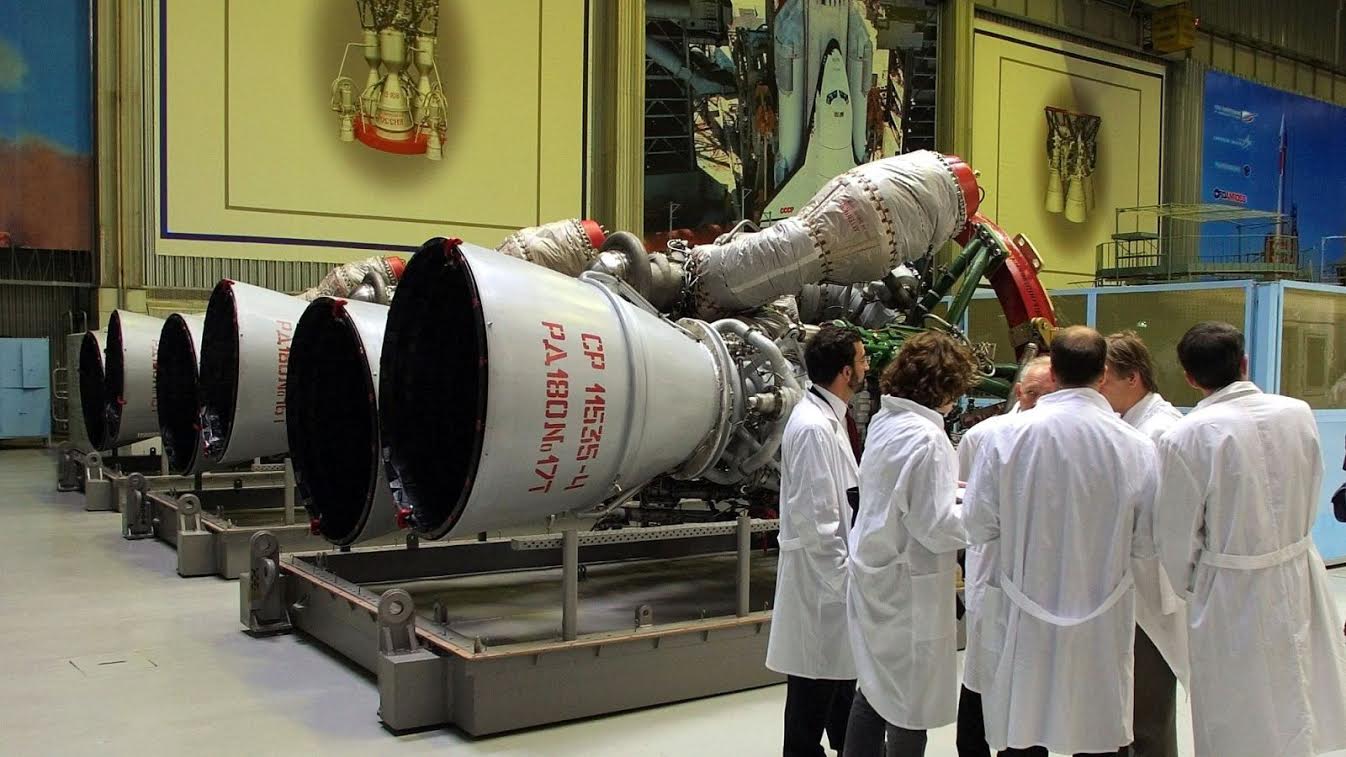
In a major military space policy shift, United Launch Alliance (ULA) will be allowed to procure more Russian RD-180 engines for the Atlas-V rocket, clearing the way for ULA competition with Spacex for military spacecraft launches. The budget action has set off one of most bitter congressional fights in decades involving the U.S. space program and foreign policy.
The change is being made possible by Congressional budget action to lift the ban on Russian engine procurements and to provide new funding for such buys.
The dramatic news came with the Dec. 16 release of the $1.1 trillion, 2000 page, 2016 Omnibus Spending Bill agreed to by House and Senate budget conferees.
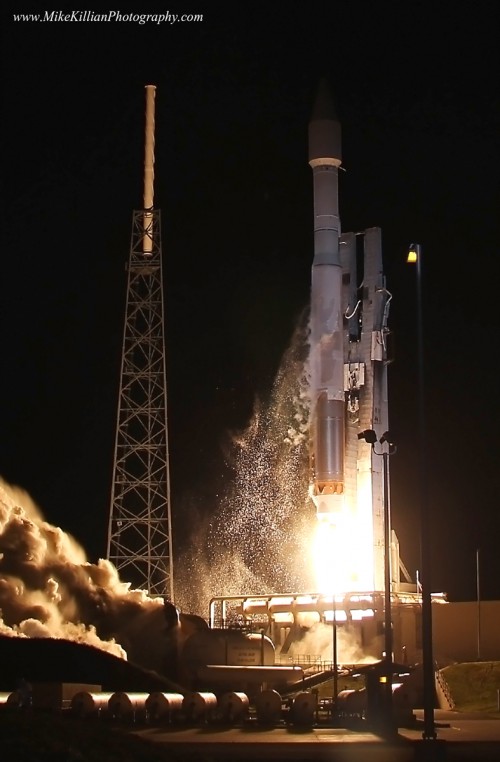
ULA declined to comment on the breakthrough, which is a tremendous win for the company and its thousands of employees who will now be able to go head-to-head against SpaceX, which is preparing to return the Falcon-9 to flight this month after a midsummer accident.
Sen. Richard Shelby (R-Ala.), who led opposition to the ban, said that to continue it would be “reckless” and endanger U.S. assured access to space for national security payloads, most of which are launched on the Atlas-V. Defense Secretary Ashton Carter agrees with the action.
The move, however, drew thunderous opposition on the floor of the Senate from Sen. John McCain (R-Ariz,), who opposed lifting the ban because of outrage over rewarding Russia after its invasion of Ukraine and its bombing of U.S. allies in Syria.
“This is outrageous. And it is shameful. And it is the height of hypocrisy, especially for my colleagues who claim to care about the plight of Ukraine and the need to punish Russia for its aggression.,” McCain said. He vowed to continue his opposition in the 2017 budget cycle.
“A rocket factory in Alabama [ULA’s] may benefit from this provision. Boeing, headquartered in Illinois, may benefit from this decision. But have no doubt, the real winners today are Vladimir Putin and his gang of thugs running the Russian military-industrial complex,” McCain said.
As restrictions on the 860,000 lb. thrust RD-180 were being lifted, advances were also announced on the development of a U.S. replacement for the RD-180 to regain U.S. production capability for large hydrocarbon engines.
A new engine under development could theoretically replace the RD-180 on the Atlas-Vs before ULA’s methane fueled Vulcan rocket is ready around 2020, or provide an option for the Vulcan if the Blue Orgin’s BE-4 methane engine program falters. It also could enable future competitors that might use such a U.S. developed hydrocarbon replacement. The new milestones are:
- Aerojet Rocketdyne AR1 design review:
The company announced it this week completed a key design review for its 500,000 lb. thrust AR1 being designed as a replacement for the RD-180. “This is one of the most important design reviews the program will undergo during its development,” said Julie Van Kleeck, vice president of Advanced Space & Launch Programs at Aerojet Rocketdyne.
During the review, each of the 18 primary components and subsystems on the AR1 were thoroughly analyzed to ensure that each works properly and that once integrated, will function together seamlessly, the company said. The review moves the AR1 program toward full-scale engine testing in 2017, and delivery of a flight-qualified engine ready for certification by 2019.
To date, AR1 hardware has undergone more than 155 staged-combustion tests. “We have achieved every milestone in our AR1 schedule to be ready for 2019. We have in place the production facilities, tools, equipment, a supply base and, most importantly, highly skilled employees to manufacture the AR1 engine to meet the national security needs of our nation.” said Aerojet Rocketdyne CEO and President Eileen Drake.
- USAF Booster Propulsion Technology Maturation contracts:
Nearly $3 million in contracts were awarded this week to Tanner Research; Moog Inc; and Johns Hopkins University as part of the Air Force rocket engine technology effort to help companies like Blue Origin and Aerojet Rocketdyne develop alternatives to the Russian RD-180.
A total of 6-8 contracts worth more than $35 million are to be award by mid winter for such technology work, said USAF Gen. John Hyten, commander of Air Force Space Command.

Whether USAF will give ULA the time to prepare an Atlas V bid against Spacex for the first GPS III launch in 2018 is still to be determined. But release of the ban sets up ULA to procure all of the RD-180 engines required to compete for both civilian and national security payloads in the future.
The language in the bill was a tremendous blow (and apparent surprise) to McCain, Chairman of the Senate Armed Services Committee, who along with that committee have been fighting hard against lifting the ban (AmericaSpace Dec. 11, 2015; Oct. 29, 2015; Sept. 2, 2015).
McCain was outmaneuvered however in the appropriation process by Sen. Dick Durbin (D-Ill) where Boeing is headquartered and by Sen. Richard Shelby (R-Ala.) from where the Atlas V is assembled.
A single paragraph authored by Shelby and secretly inserted into the 2016 spending bill is all that it took to overturn the Russian ban and approve more RD-180s. Shelby’s paragraph states:
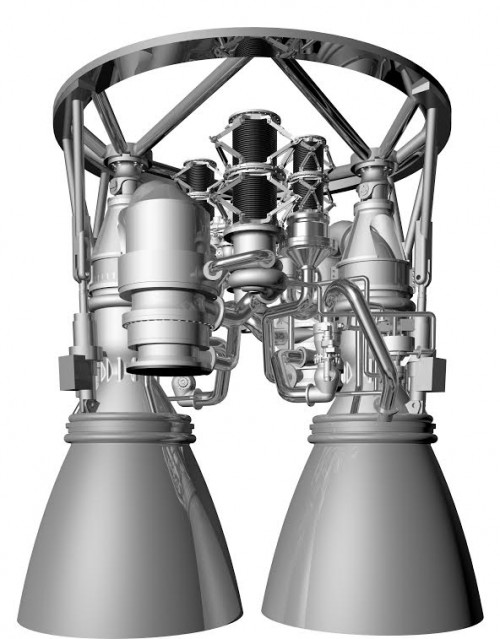
”None of the funds made available by this Act for Evolved Expendable Launch Vehicle service competitive procurements may be used unless the competitive procurements are open for award to all certified providers of Evolved Expendable Launch Vehicle-class systems: Provided, That the award shall be made to the provider that offers the best value to the government: Provided further, that notwithstanding any other provision of law, the award may be made to a launch service provider competing with any certified launch vehicle in its inventory regardless of the country of origin of the rocket engine that will be used on its launch vehicle, in order to ensure robust competition and continued assured access to space.”
According to Marcia Smith who heads SpacePolicyOnline.com, the specific words “notwithstanding any other provision of law” makes irrelevant the earlier Defense Authorization ban on Russian engine procurements.
Separate votes on the bill by the full House and Senate were to take place by late today (Dec. 18). If the bill is approved as expected, it will go to President Barack Obama for his signature as early as today. The RD-180 issue is barely a footnote to most members of Congress.
Sen. McCain said he spoke out on the Senate floor, “to call attention to the triumph of pork barrel parochialism in this year’s Omnibus Appropriations Bill—in particular, a policy provision that was airdropped into this bill, in direct contravention to the National Defense Authorization Act (NDAA), which will have U.S. taxpayers subsidize Russian aggression and “comrade capitalism.”
Congress passed the Fiscal Year 2015 National Defense Authorization Act (NDAA), which restricted the Air Force from using Russian-made RD-180 rocket engines for national security space launches — engines that are manufactured by [Energomash], a Russian company controlled by some of Putin’s top cronies.
“Our nation should not rely on Russia to access space, but because it is simply immoral to help subsidize Russia’s intervention in Ukraine and line the pockets of Putin’s gang of thugs who profit from the sale of Russian rocket engines,” said McCain.
He said, “The FY16 NDAA, including its provision limiting the use of Russian rocket engines, was debated for months. The Committee on Armed Services had a vigorous debate over this important issue. An amendment was offered to maintain the restriction on the Air Force’s use of Russian rocket engines, and in a positive vote of the Committee, the amendment was adopted.
“We then considered hundreds of amendments to this defense authorization bill on the Senate floor over a period of two weeks, and did so transparently and with an open amendment process. There was not one amendment called up to change the provision of the NDAA concerning RD-180 rocket engines.”
“The Senate had this debate. We had ample time and opportunity to have this debate. And through months of this fulsome debate, no Senator came to the Senate floor to make the case that we need to buy more Russian rocket engines. No Senator introduced an amendment on the floor to lift the restriction on buying more Russian rocket engines. To the contrary, the Senate and the full Congress voted, overwhelmingly and repeatedly, to maintain this restriction. This is a policy issue, and it was resolved, as it should be, on the defense policy bill,” said McCain.
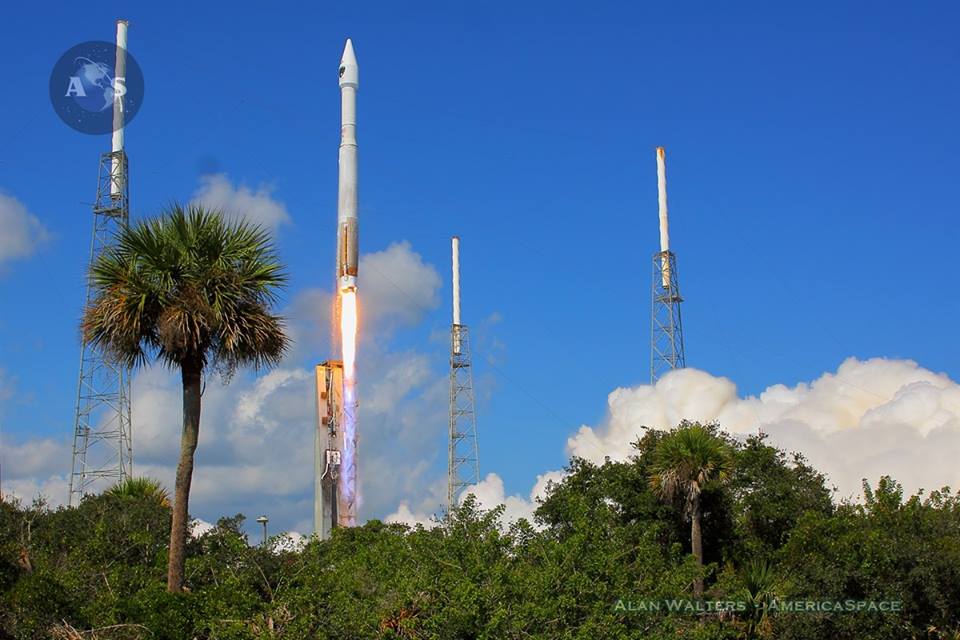
“And yet, here we stand with a 2000-page omnibus appropriations bill, crafted in secret with no debate, which most of us are seeing for the first time. And buried within it is a policy provision that would effectively allow unlimited purchases and use of Russian rocket engines,” McCain said.
“I take no pleasure in saying that. I believe that avoiding the year-over-year conflict over this matter between our authorizing and appropriations committees is in our nation’s best interest. Such back-and-forth only delays our shared desire to end our reliance on Russian technology from our space launch supply chain, while injecting instability into our national security space launch program. That instability threatens the reliable launch of our most sensitive national security satellites and the stability of the fragile U. S. industrial base that supports them.”
“I simply cannot allow Senator Shelby, Senator Durbin, the Appropriations Committee, or any other member of this body to craft a take-it-or-leave-it omnibus spending bill that allows a monopolistic corporation [in this case ULA] to do business with Russian oligarchs to buy overpriced rocket engines that fund Russia’s belligerence in Crimea and Ukraine, its support for Assad in Syria, and its neo-imperial ambitions,” said McCain.
“I will not stand for that, and none of you should either,” he told the Senate.
Sen McCain’s full RD-180 opposition speech on the Senate floor can be read HERE.
.
Be sure to “Like” AmericaSpace on Facebook and follow us on Twitter: @AmericaSpace
.





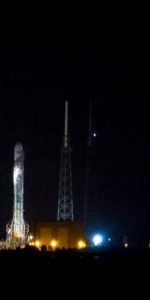
I believe in Capitalism and free markets with competition because that provides the best option for human growth. However I believe this was part of the agreement was to eliminate further downing of SpaceX rockets by the Russians like CRS 7. Like the MOB Russia will protect its market share by all means available…No one should be surprised.
The Russians sabotaged SpaceX’s SpX-7? Alright, that’s just too much nonsense for me to stomach, Tracy.
SpX-7 didn’t go down because of the Russians but possibly (SpaceX doesn’t know for certain) a helium tank support bracket failed. The bracket made it into a Falcon 9.1 because SpaceX did not have sufficient quality controls in place to regularly monitor and test parts it received from suppliers. In this, SpaceX is in good company as this problem regularly bites companies in the hide.
Jim,
Musk was the leading advocate for eliminating the RD-180 thus requiring ULA to use a new engine by Blue Origin that won’t be ready for another 3 years. This created a marketplace for SpaceX in the Military Market. NASA did not head the investigation but rather took SpaceX cause explanation of loss. The Air Force did not head the investigation but rather took SpaceX cause explanation of loss. The supplier was never named. The Strut was said to have failed at less than 20% of design load. Shortly after the loss, Russia received a new $500M contract for additional ISS seats after 2017. ULA has just conceded the GPS 3 to SpaceX for the Airforce in 2018. The SpaceX delay has greatly slowed reusability testing. The BEAM module designed by Bigelow has been delayed as well. Both of these delays are limiting competition thus maintaining the high costs of spaceflight
No conspiracy, just getting what is paid for. There is no cheap. SpaceX has two strikes against it- consistently far behind schedule and the catastrophic failure of a supposedly human-rated vehicle. One more to go.
I will throw a party.
Conway,
The Space Shuttle cost $1.5B per flight… to LEO..was the most complicated piece of technology built by Man…I am thinking the hobby rocket will get four people (me+3) to Mars for under $.15B (note the decimal places) just in time before A.I. kills us all…Because we are so corrupt…
The hobby rocket is just a cheaper nastier version of the do-everything-pay-for-itself-cargo-bay-of-dreams. LEO and Mars are both dead ends. The 1st space age ended in 1972 and there will not be another without fully committing to a Moon return with a Super Heavy Lift Vehicle.
That would be the SLS.
The next President is likely my last chance to see a real space program in my lifetime. Less than a year till election and space advocates are hopelessly divided so there is not much hope.
Yes, I completely blame NewSpace.
Conway
The Russians are going to the Moon in a big way…Maybe that will be your ticket off Earth before A.I. kills us all…They make a good product…Look how everybody is fighting over the RD-180…And they are only charging $.1B per seat to go around the Moon (not land)…With a two seat minimum.
A little more intelligence would not kill you.
Reading this thread, on all accounts, makes my head hurt. Like watching a fight breakout on the “Real Housewives” or something. The policy error on RD-180 goes way back when post USSR split Moscow was a pretty docile beast, not so much anymore. Everyone knew, from the beginning, co-production was never going to happen so we should have have a legit exit plan long ago. As usual government policy meant to fix/prevent one thing breaks something else.
Nobody is forcing you to read this Ron. You can go back to the SpaceX News and The SpaceX Review and your cronies will stroke you there. Not here.
As usual a government hating Ayn-Rand-in-Space anti-NASA/SLS troll always shows up to try and poison the well.
Nice try again, but I am not Ron. I’ve never met him, talked to him or attended his school of anything. I am 100% sure I am not Ron, however I am only 99.99% sure you are Gary. It’s pretty funny to grow up with a Space Shuttle model on my shelf, purchased on a tour of the cape as a child, and being called a NASA hater from someone who has never met me.
Pretty funny Ron. You show up suddenly using the name of my sweetheart and brand me a “gary” like it is a dirty name- and then deny what team you are playing on. You have never been good at telling the truth. And you could never stand someone criticizing that person you are completely obsessed with.
I am 99.99% sure it is you.
Why can’t you follow the money everybody…SpaceX CRS7 explodes no one wants to investigate..The part that caused it is from some unnamed supplier…that builds junk….Russia gets Billions more in revenue and
No says gee thats strange…Conway how much will SLS cost per launch $1B…Putting a facility paid for by Uncle Sam on the Moon…$500B …Such a good idea…For ULA, LM, Boeing, Grumman..et al
Musk has taken advantage of the existence of the circumstances caused by prior mistakes and cleverly manipulated the system into funding his hobby. He is not quite a genius though or he would have started with a pressure-fed booster of a couple million pounds thrust instead of the pathetic Merlin. A huge boon to SpaceX has been the lunatic fringe of libertarian space clown wannabe’s who have contaminated all public discourse for years.
I might be his biggest fan except for that engine- he failed the initial IQ test by pursuing the Merlin and severely limited anything his company would be able to accomplish. As evidenced now.
Musk set out to sabotage anything that would jeopardize funding for his hobby project by placing the Moon off limits via a campaign contribution- as evidenced by an infamously blunt presidential speech.
A Super Heavy Lift Vehicle with hydrogen upper stages was, and is, far beyond the ability of his company and it’s basic tenet of going cheap. Such a vehicle bypassing LEO and going straight to the Moon is the enemy of SpaceX.
This is essentially what NewSpace is all about; an dead end LEO business plan using an inferior lift rocket with obsolete propellants. Everything is rationalized and mythologized around the companies limited capability.
The worst thing that has ever happened to space exploration.
Tracy,
Musk’s statements after the whole CRS-7 “unpleasantness” indicated that SpaceX did not do acceptance testing or even require proof of certification testing on a safety critical part.
If your quality control plan is that lax, enemy action is not required.
NASA needs everyone conniving with Bolden and his real boss Musk fired. Completely bizarre they are even talking about going ahead with flying astronauts on the exploder. We paid for two just in case one of them blew up but I guess that long-ago campaign contribution means more dead astronauts is OK in the interest of politicians paying their debts.
Joe –
It would appear that one way or another the reliable Atlas V potentially could have a long future!
It would be nice to see an evolved Atlas Heavy heading uphill with either RD-180s or AR-1s and lifting a reusable Advanced Habitat Module.
What is nifty about kerosene powered launchers and Lunar Landers, like Moon Express’s kerosene and H2O2 powered MX-1 Lander, is the potential of using Isp improving nano-particle additives, such as Lithium Aluminum Hexahydride, or Li3AlH6, mixed in with the kerosene.
Yep, Li3AlH6 has an optimized vacuum Isp of 469 and an optimized vacuum density Isp of 588 when burned with H2O2. Data from: NOVEL ORGANOMETALLIC PROPELLANTS FOR HYPERGOLIC APPLICATIONS’ by T. L. Pourpoint and J. J. Rusek
Currently, the reusable Advanced Habitat Module is a concept being looked at within NASA and there are now clear legal requirements for it.
“Within Advanced Exploration Systems funding, Congress also directs NASA to spend no less than $55 million on a habitation module, which will be needed to augment living space for astronauts on lengthy trips beyond low Earth orbit. Congress wants a prototype habitation module no later than 2018.”
From ‘NASA Gets Big Boost in Final FY2016 Appropriations Bill’ 16-Dec-2015 by Marcia S. Smith http://www.spacepolicyonline.com/news/nasa-gets-big-boost-in-final-fy2016-appropriations-bill
“7 – Separate the habitat with its habitat propulsion system (HPS) from the ISP system
8 – Use the HPS to descend and land at the exploration site on the destination surface”
And, “The positioning of propellant around the habitat protects the crew from
radiation”
From: ‘The Single Habitat Module Concept for Exploration’ by Joe Chambliss http://ntrs.nasa.gov/search
Thus the reusable exploration habitation module may also serve as a Lunar and eventually a Mars Lander and might benefit from burning the dense and easy to store high Isp propellant combination of a Li3AlH6 kerosene mixture and H2O2.
Perhaps one question is, “Will the reliable Atlas V continue to evolve and serve American space interests by supporting SLS/Orion Lunar missions?”
And, “Could future Atlas launch vehicles become cheaper and more efficient by being powered by engines that burn a Li3AlH6 kerosene mixture with H2O2?”
Finally, “Could eventually, two to four of five meter in diameter evolved Atlas first stages serve as boosters for a highly capable future SLS launcher?”
“Yep, Li3AlH6 has an optimized vacuum Isp of 469 and an optimized vacuum density Isp of 588-”
You keep quoting these impossibly high Isp’s James so I just went to that paper and went through it and I don’t see it. I suspect you are not reading the graphs correctly.
Correct me if I am wrong but I am correcting you.
As for a “habitation module” NASA continues to deny the reality of cosmic radiation and until they leave the denial stage behind and focus on the Moon as the place to both acquire the necessary massive shielding and light off the nuclear devices necessary to push that shield around- nobody is going anywhere beyond the relatively small cislunar sea between GEO and the Moon.
Conway Costigan – Concerning:
‘NOVEL ORGANOMETALLIC PROPELLANTS FOR HYPERGOLIC APPLICATIONS’
By T. L. Pourpoint, J. J. Rusek
See page 4, “Table 1: Fuel Properties and Performance” Read at the bottom left of the table for: “H2O2” “Lithium Aluminum Hexahydride Li3AlH6” with “Optimized Vacuum Isp” at the top of one of the columns and looking at the bottom of that column you should see “469”. Similarly looking at the top of the table for “Optimized Vacuum Density Isp” and again looking at the bottom of the table you will see “588”.
See also page 6 for, “Of particular interest is Li3AlH6 used in combination with anhydrous hydrogen peroxide. This propellant combination has performance characteristics 30% greater than NTO/MMH while maintaining virtually the same
combustion chamber temperature.”
Note that Spacex’s SuperDraco abort engines for the Dragon burn NTO/MMH.
Concerning possible H2O2 mixed in with H2O ice in the super cold polar craters of the Moon note: “Similarly, cosmic radiation (mainly protons) acting on cometary and interstellar ices can promote extensive chemical change. Among the products that have been identified in irradiated H20-ice is hydrogen per-oxide (H202), which has been observed on Europa and is suspected on other worlds.” From: ‘Descent with Modification: Thermal Reactions of Subsurface H202 of Relevance to Icy Satellites and Other Small Bodies’ By Reggie L. Hudson and Mark J. Loefler April 2012
If there are deposits of H2O2/H2O (and possibly mixed with ammonia) in the Moon’s polar craters, a lander landing on such an exposed or near surface H2O2/H2O deposit might set off an ‘unpleasant’ surface reaction.
I know the vacuum Isp is the highest value but what “optimized” means and what “Optimized Vacuum Density Isp actually means is beyond my poor education.
Wiki says:The highest specific impulse for a chemical propellant ever test-fired in a rocket engine was 542 seconds (5,320 m/s) with a tripropellant of lithium, fluorine, and hydrogen. However, this combination is impractical; see rocket fuel.[20]
This lithium stuff these guys are playing with does not sound….practical.
But I wish them luck.
Conway Costigan –
“But I wish them luck.”
Me too.
Last I heard, Li3AlH6 wasn’t cheap. But eventually that could be a fixable issue.
Cryogenic LOX is used with many fuels and the point I was trying to make is that kerosene, or RP-1, is also fundamentally quite useful and so is the Atlas V, despite the current rush to start using the less dense cryogenic methane.
Note that the new and powerful Angara 5 is a kerolox launcher.
A large and heavy cryogenic methane propellant tank hurts the mass ratio and thus decreases overall launcher performance and increases costs.
Overall, the Atlas V is a great launcher and has several excellent potential growth paths.
Note that from http://www.ulalaunch.com/products_atlasv.aspx
we see a “18,850 kg 41,570 lbs” to LEO for the Atlas V 551.
The basic Atlas V core with the RD-180 has a sea level thrust of 860,300 lbs with a Specific Impulse of 311 seconds.
A larger Atlas with 5 meter diameter tanks and using the F1-B or RD-171 or two RD-180 or four AR-1 rocket engines, much larger SRBs, and the ACES second stage might offer a doubling, or more, of its current maximum payload to LEO.
Reducing the reliable Atlas V’s launch costs does seem to currently be an issue.
If it doesn’t add risks and is potentially risk reducing and economically feasible, then reusable vertical landing options for the first stage of the Atlas V, and future versions of the Atlas, could be enabled by adding several small kerolox rocket engines to supplement the large RD-180 main engine during ascent and control the descent velocity.
Joe,
Have you ever heard of a rocket failure explosion investigation that was not overseen by NASA or the Air Force or Congress…And SpaceX can say “the cause was not our rocket system rather apart by a third party supplier that will be unnamed”..And we are going to modify the booster to increase range by 30%…And everybody is ok with this?
Just stop Tracy. Nobody blew up the SpaceX hobby rocket- it did that all by itself.
Tracy,
“Have you ever heard of a rocket failure explosion investigation that was not overseen by NASA or the Air Force or Congress”
No.
“And SpaceX can say “the cause was not our rocket system rather apart by a third party supplier that will be unnamed”..And we are going to modify the booster to increase range by 30%…And everybody is ok with this?
No again.
But none of that (however irregular) supports the idea of sabotage by the Russians or anyone else.
Crony Capitalism and cover-up of incompetence yes, sabotage no.
Joe gets the Kewpie Doll!
https://en.wikipedia.org/wiki/Crony_capitalism
https://www.flickr.com/photos/nasahqphoto/4534868607
“The term, “Corporate Welfare”, was reportedly invented in 1956 by Ralph Nader;[2] conservatives like Grover Norquist prefer “Crony capitalism”.”
Joe says crony capitalism, I say corporate welfare, Tracy says the Russians did it.
The Russians had moved a spy ship in close proximity to the waters off the Cape during several SpaceX launches. Not only have SpaceX pissed of the U.S. traditional rocket industry, but also the industries of Europe, Russia and possibly China. With all the problems that Putin’s Russia is causing the Ukraine & NATO(in Syria), he could’ve declared open season on SpaceX by turning his spies loose on them. Just my opinion.
Spying on other countries launches is a “time honored tradition” going back decades.
Sabotaging other countries launches (at least as far as the public record goes) is not.
Everybody has a right to an opinion, but absent evidence of sabotage, I will stick with incompetence as the explanation for what happened to CRS-7.
Anyone has any ideas who the strut supplier was?
This is outrageous! If this becomes law then it needs another Federal lawsuit by SpaceX. Deep, multi-layer evidence discovery with Supreme Court mandated felony charges for pergury is the key to fighting government corruption.
Be careful what you wish for Bill, it would most likely be Elon in handcuffs doing the perp walk.
SpaceX is the poster child for corporate welfare and guilty of influence peddling to a far greater degree than ULA. Really.
Think about it. What has SpaceX done with the billions poured into their coffers for “cheap lift” and an economical astronaut taxi to the space station? Per pound their cargo is far more expensive than the shuttle and they have yet to send a person up. They are now launching commercial satellites for profit and pursuing the same defense dollars the fanboys have wailed and gnashed their teeth over from the beginning as “OldSpace corruption.”
That Musk has managed to get away with pouring those billions in tax dollars into his hobby rocket project without accomplishing anything he promised is amazing….or disgusting, depending on how much of the Kool-aid you have been guzzling.
Despite ULA 100+ launches and SpaceX 18 and kaboom, the NewSpace infomercial and a legion of cyber-marketing sycophants continue to shout victory from the mountaintops.
And if you think all this criticism of SpaceX has nothing to with RD-180 procurement:
http://yellowhammernews.com/politics-2/john-mccain-really-hates-alabama-but-his-attempts-to-screw-the-state-keep-failing/
“So why just target the military, if the real goal is to stick it to Russia? Why not ban Russian-made rocket engines altogether?
The fact of the matter is that ULA’s loss in Alabama would have been SpaceX’s gain in California, and a major boon for John McCain’s friend and immigration-reform-backing billionaire Elon Musk.
SpaceX is developing its own rockets and views ULA as its primary competition. The company has also received significant press coverage for being a “private” space alternative to NASA, but the facts show the company has received the overwhelming majority of its funding — billions of dollars — from the United States government.
“Musk and his companies’ investors enjoy most of the financial upside of the government support, while taxpayers shoulder the cost,” explained the LA Times’ Jerry Hirsch.
McCain has been one SpaceX’s most vocal backers, even in the wake of several very public failures of the company’s rocket systems.
“I am confident that this minor setback will in no way impede the future success of SpaceX and its ability to support U.S. national security space missions,” he said earlier this year after a SpaceX Falcon 9 rocket exploded just two minutes after launch.”
“A rocket factory in Alabama [ULA’s] may benefit from this provision. Boeing, headquartered in Illinois, may benefit from this decision. But have no doubt, the real winners today are Vladimir Putin and his gang of thugs running the Russian military-industrial complex,” McCain said.
That’s cute. Coming from the other military industrial complex, which now has more bases around the world and is involved in more conflict zones than ever before. Hypocrite much?
I still put my money on Space X. Saying that line will probably resolve in many smart asses telling me how they haven’t accomplished sht, and this and that. But I disagree. They have already accomplished this much, WITH the super powerful lobbies/corrupt politicians/what ever geopolitical bullshit chess game they are playing around. Could it be any harder to start a space company in this environment? Maybe the last one exploding was a good thing, now they changed to all in house manufacturing. So outsiders will have, on purpose or by accident, less ways to f$%#k sht up.
So that we in the future will be able to give each other hateful comments on Mars. Give the new guy a chance, he is the only one sincere.
“I still put my money on Space X.”
That is fine, but some of us smart asses don’t like billions in tax dollars being poured into a rich guy’s hobby project.
“-we in the future will be able to give each other hateful comments on Mars.”
Anybody who is unfortunate enough to find themselves debilitating in some nasty hole on Mars will dream of one thing- Earth.
Sniesss says:
(a) “…many smart asses telling me …”
(b) “…accomplished sht…”
(c) “…geopolitical bullshit…”
(d) “…ways to f$%#k sht up.”
And here I have been being careful in my choice of words, thinking there were language filters.
This certainly opens a “Brave New World” for discussions.
The NewSpace mob is more than happy to poison the well any way they can. If they can make a site so nasty and offensive it drives away anybody intelligent saying anything that criticizes their dogma then they consider it a win.
Well, if ULA doesn’t choose the AR-1, then, maybe a new future company will. AR should’ve built this engine 15 years ago as an eventual replacement for the RD-180 in the Atlas 5. But they waited for government funding. Then, along came a billionaire named Bezos with a dream and an engine called the BE-4 that didn’t need government funding. Stay tuned to Americaspace for updates on this engine quarrel.
Arth –
Yep, sometime down the road an evolved Antares or a new but similar sized or even much larger launcher might make good use of the kerolox AR-1.
Putting an AR-1 on the Delta II could help improve that reliable launcher’s LEO and beyond LEO payload capability.
And a large AR-1 powered launcher could also make use of additional small kerolox rocket engines next to the main engines to add extra ascent acceleration and carefully control descent deceleration if reuse of the first stage of the launcher doesn’t add risks and is potentially risk reducing and economically feasible.
Blue Origin’s hydrolox BE-3 with 110,000 lbs of sea level thrust and the ability to throttle down to as low as 25,000 lbs of thrust is also quite useful.
“As of April 2015, United Launch Alliance (ULA) is considering the BE-3 for use in a new second stage, the Advanced Cryogenic Evolved Stage (ACES), which is, as of April 2015, planned to become the primary upper stage for ULA’s Vulcan orbital launch vehicle in the 2020s.”
And, “For Blue Origin’s future orbital launch vehicle they have developed a variant of the BE-3 for use in upper stages. This engine has a vacuum thrust of 670 kilonewtons (150,000 lbf).” Quotes from Wikipedia ‘BE-3’.
It would be great to see an evolved Atlas V with larger SRBs and an ACES second stage!
I like my guy Shelby for supporting SLS. Not so much for propping up ULA
SLS is one giant heap of pork, a rocket to nowhere. If this is the best of what the Dinospace sector has to offer then the sooner Musk puts them all out of business the better.